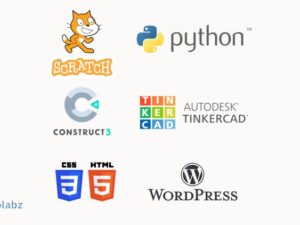Management Consulting Techniques, Tools and Frameworks
- Description
- Curriculum
- FAQ
- Reviews

What is the aim of this course?
This course will help you drastically improve your knowledge of management consulting techniques, tools, and frameworks. It is designed for people who want to become management consultants or business analysts or are dealing with performance improvements as well as strategic projects in their firms. In the course you will learn 3 things:
-
What consulting techniques, tools, and frameworks there are
-
When to apply each and every one of them
-
How to use them in practice including examples of how to calculate specific things in Excel
This course is based on my 15 years of experience as a consultant in top consulting firms and as a Board Member responsible for strategy, performance improvement, and turn-arounds in the biggest firms from Retail, FMCG, SMG, B2B, and services sectors that I worked for. I have carried out or supervised over 90 different performance improvement projects in different industries that generated a total of 2 billion in additional EBITDA. On the basis of what you will find in this course, I have trained in person over 100 consultants, business analysts, and managers who now are Partners in PE and VC funds, Investment Directors and Business Analysts in PE and VC, Operational Directors, COO, CRO, CEO, Directors in Consulting Companies, Board Members, etc. On top of that my courses on Udemy were already taken by more than 224 000 students including people working in EY, McKinsey, Walmart, Booz Allen Hamilton, Adidas, Naspers, Alvarez & Marsal, PwC, Dell, Walgreens, Orange, and many others.
I teach through case studies, so you will have a lot of lectures showing examples of analyses, and tools that we use. To every lecture, you will find attached (in additional resources) the Excels as well as additional presentations, and materials shown in the lectures so as a part of this course you will also get a library of ready-made analyses that can, with certain modifications, be applied by you or your team in your work.
Why have I decided to create this course?
Management consulting has been very creative and has produced or popularized the application of many tools, techniques, and frameworks that can be used to improve any business. By putting them in one course and explaining them using real-life examples, I wanted to make this knowledge available to students who are considering joining Management Consulting firms as well as managers who simply need to expand their toolbox with a few useful tools.
Things you will find in this course will improve your awareness and skills in analyzing problems that you will be facing in business as well as in your private life. Thanks to this course, you will know what tool, technique, or framework to use and how to use it in practice.
To sum it up, I believe that if you want to build or to find improvements in any business you should master the techniques presented in this course. That is why, I highly recommend this course not only to consultants or business analysts who have to advise their customers but also to owners, founders of businesses as well as managers and directors.
In what way will you benefit from this course?
The course is a practical, step-by-step guide loaded with tons of analyses, tricks, and hints that will significantly improve the speed and efficiency of your business. There is little theory – mainly examples, a lot of tips from my own experience as well as other notable examples worth mentioning. Our intention is that thanks to the course you will learn:
-
What management consulting tools, techniques, and frameworks are available
-
How to understand business using management consulting tools, techniques, and frameworks
-
How to apply in practice those techniques, tools, and frameworks to optimize the business and make strategic decisions
You can also ask me any question either through the discussion field or by messaging me directly.
How the course is organized?
The course is divided currently into 4 sections:
-
Introduction. We begin with a little intro into the course as well as some general info on production
-
Basic tools, techniques, and frameworks used by management consultants. In the second section, I will discuss the main tools that you can use to analyze and understand a business. We will talk about things like issue trees, bottom-up approaches, top-down approaches, backward reasoning, the 80/20 rule, benchmarking, cost drivers, opportunity trees, and many, many more.
-
Intermediate tools, techniques, and frameworks used by management consultants. In this section, I will discuss more advanced techniques such as rankings, scenario analysis, representative element analysis, decision tree, OEE, OLE, theory of constraints, Critical Chain, and many, many more.
-
Advanced tools, techniques, and frameworks used by management consultants. In this section, I will discuss further more advanced techniques such as simulation analysis, decomposition analysis, feasibility analysis, and sensitivity analysis.
You will be able also to download many additional resources
-
Excels with analyses shown in the course
-
Presentation of slides shown in the course
-
Links to additional presentations and movies
-
Links to books worth reading
At the end of my course, students will be able to…
1. Master management consulting tools, techniques, and frameworks
2. Apply the right elements from your management consulting toolbox
3. Analyze fast problems that are killing your business
4. Find fast potential improvements in your business
5. Prepare you to move on to intermediate-level management consulting training
6. Calculate in Excel the impact of your proposals
-
1Introduction
In this lecture I will show you what you can learn in this course.
-
2A little bit about me
A few words about your humble teacher
-
3How this course will be organized?
I will show you how the course is organized
-
4What to do if a blurry image appears
Here I will show you what to do if a blurry image appears
-
5How to reach additional resources
Here I will show you how to find additional resources attached to the coruse like Excel files, presentations, links etc.
-
6Basic tools – introduction
In the second section I will discuss the main tools that you can use to analyze and understand a business. We will talk about things like: issue tree, bottom-up approach, top-down approach, backward reasoning, 80/20 rule, benchmarking, cost drivers, opportunity tree and many, many more
-
7Bottom-up approach
In this lecture you will get to know our favorite method for first rough estimation – the bottom-up method. We give you also 2 examples with Excel calculation how to use it.
-
8Top-down approach
Top-down is the little brother of bottom-up approach – not used that often but still very useful for re-segmenting the market (niche an low cost strategy)
-
9Ceramic tile market – Case Introduction
Le'ts use the Bottom-up approach to estimate a ceramic tile market
-
10Ceramic tile market - case to be solved
Here I present you the case. You will be asked to estimate the market for ceramic tiles
-
11Ceramic tile market - solution
In this lecture I will show you the logical structure to the case presented in the previous lecture
-
12Ceramic tile market - solution in Excel
Once you are done with the logical structure you should build the analysis in Excel on the basis of it
-
13Ceramic tile market - Presentation in Power Point
The data you have gathered will be used in your business analysis. You can also fill in the slides prepared in the very beginning and modify it if needed
-
14Backward logic / backward reasoning
In this lecture I show the backward thinking /induction. This approach enables you to design the whole process, company on the bases of the expected outcome
-
15Backward logic based decisions – Case Introduction
Let’s try to put the backward reasoning to practice. In this case study we will use it to decide what effort has to be done to 10x the current business. A few information about the retailer
He has currently 100 stores. Each store sales are equal to EUR 2 M
He wants to 10x the business up to Year 5
Estimate what LFL growth he must get and how many stores he must open
Assuming EUR 1 M per store estimate the Capex
Estimate how many people he has to recruit assuming 6 people per store
-
16Backward logic based decisions – Solution
In this lecture I will show you how to solve the case shown in the previous lectures
-
17Backward logic based decisions – When it makes sense to use it
Backward logic can be used in many situations. Below some of them
You have a clear goal in the future but not a clear path towards it
You want to estimate the pace needed to reach the goal
You want to check the implications for you or your department
You want to see what are the limitations preventing you from reaching the goal
You want to see whether the goal is not too ambitious
You want to see whether the goal does not require too big resources
-
18Compounded effect
In many cases you can get high end result from compounding effect in time or by getting small improvements in many areas. In this lecture I will explain the concept
-
19Compounded effect – Case Study Introduction
Imagine that you have to help content agency estimate what will be the effect of increasing the number of posts produced by 10% every month. Use the compounded effect to estimate it
-
20Compounded effect – Available Data
Here we will have a look at the Data Available that will help you with solving the case study introduced in the previous lecture
-
21Compounded effect – Solution
In this lecture I will show you the solution to previously introduced case study
-
22Issue tree – Introduction
Issue tree is a simple yet powerful concept used in consulting for structuring discussion and picking the right topics to concentrate on. In this lecture I will show you the principles of using it as well as a practical example
-
23Issue tree – Examples Introduction
In this lecture, I will summarize what kind of examples of issue trees we will present in the next few lectures.
-
24Issue tree – Logistics
Here I will show example of an issue tree in Logistics
-
25Issue tree – Retail
Here I will show example of an issue tree in Retail
-
26Issue tree example for a FMCG firm
Here I will show you an example of an issue tree in FMCG
-
27Low hanging fruits
In this lecture we will talk briefly about applying the low hanging fruits in practice. I will show you the principles of using it as well as a practical example
-
28Low hanging fruits – Case Studies
Now let’s see on a bit more advanced case study how to apply the low hanging fruit in practice.
In the next lecture we will develop a modification of low-hanging fruit framework to cost reduction. We will also apply it to a drugstore chain that has 4 000 stores and want to reduce it costs to survive the recession.
Enjoy the case study and as always if you have any questions please let me know
-
29Quick wins for cost reduction
Let’s look how the quick win framework looks for savings. We will look at 2 dimensions:
What is the potential savings we can achieve
How easy it is to implement it?
We will have thanks to 4 categories of projects that we can consider:
Cow savings – easy to kill and big
Elephant – difficult to catch yet big
Chicken savings – easy to kill yet you need to kill a lot of them not to be hungry
Bat savings – small and difficult to catch
-
30Quick wins for cost reduction – Remarks on Pontetial Savings
Remember that the potential reduction in costs depends on 2 elements: potential percentage cost reduction and the cost starting point:
Potential % cost reduction
Cost starting point
We will discuss this in this lecture
-
31Quick wins in Drugstore – Case Introduction
Imagine that you have to identify quick wins in cost reduction for an international chain of drugstores. We know their cost structure
A few information about the firm that we will be analyzing
They have 4 000 stores
We have their cost structure
They have send us a list of projects that will help them reduce costs
Estimate the potential and group them using the quick wins framework
-
32Quick wins in Drugstore – Cost Structure
In this lecture we will solve the previously introduced case
-
33Quick wins in Drugstore – Cost Reduction
In this lecture we will solve the previously introduced case
-
34Quick wins in Drugstore – Summary
In this lecture we will solve the previously introduced case
-
35Management Consulting Tools, Techniques, Frameworks Overview
We cover in this course the most essential techniques, tools, and frameworks.
We know that sometimes is difficult to decide which technique, tool or framework you should use for solving a specific problem.
Therefore, we have created a cheat sheet that will narrow down your search. Below a link to the overview of all tools:
Management Consultant Tools Overview
Go to the sheet “Finder” and pick on the left the problem you want to solve.
On the right, the most useful techniques, tools, frameworks for a specific problem will appear. You can use one of them or in some cases all of them. This will depend on the context. A lot of those methods we cover in this course.
I hope this will help you with using the content of this course in practice afterward.
If there is a problem that you are facing that we did not cover please let me know. We will be updating this tool using your feedback.
So enjoy the rest of the course!
-
36Setting Priorities
Without setting the right priorites to tasks you may end-up concentrating on the wrong things.In this lecture we will discuss the ways in which you can set priorities to tasks that you have to perform. At the end I will apply them in an example to show you the difference in outcome
-
37Benchmarks – external and internal
In this lecture I will discuss the role of external and internal benchmarks. They are a powerful help in business and will help you boost your productivity yet have to be used with caution. At the end I will apply them in an example to show you the difference in outcomes.
-
3880/20 rule in practice
In this lecture I will show you how to use in practice 80/20 rule also known as Pareto principal
-
39Set SMART goals
Goals are good as long as they are SMART. In this lecture we will talk briefly about applying this useful concept in practice. I will show you the principles of using it as well as a practical example: some of them general and one specific for consulting
-
40Opportunity Tree
Opportunity tree is a tool that you can use to generate new ideas to improve your business by looking at main drivers of your business
-
41Cost drivers
If you want to understand well a business you have to be able to identify the cost drivers that shape the business model. In this lecture I will show you how to do that
-
42KPIs and business drivers – Introduction
Key Performance Indicators are extremely important to understand and manage a business. In this lecture, I will show you how this is achieved. In the next lectures I will show You using an example of a cinema company how to apply KPIs in practices
-
43Introduction to the KPIs for cinema case
In the next few lectures I show how to estimate the potential improvement in a cinema
-
44KPIs for cinema – case to be solved
In this lecture I will show you the case you have to solve. As a first step you will have to define the KPIs that matter in the cinema business
-
45KPIs for cinema – solution
In this lecture I will show you the logical structure to the case presented in the previous lecture
-
46KPIs for cinema - solution in Excel
Once you are done with the logical structure you should build the analysis in Excel on the basis of it
-
47KPIs for cinema - Presentation in Power Point
The data you have gathered will be used in your business analysis. You can also fill in the slides prepared in the very beginning and modify it if needed
-
48KPIs for marketplace – Problem
In this case study you will be asked to define the drivers and KPIs for the marketplace / 2-sided business model
-
49KPIs for marketplace – Solution
In this lecture I will discuss the KPIs that you should concentrate on in marketplace business model
-
50KPIs for marketplace – Alternative Solution
In this lecture I will discuss the KPIs that you should concentrate on in marketplace business model
-
51KPIs for a FMCG business model – Problem
In this case study you will be asked to define the drivers and KPIs for the FMCG business model
-
52Main drivers for FMG business model
Here we will discuss the main drivers for the FMCG business model
-
53KPIs for a FMCG business model – Solution
Here we will discuss the main drivers for the FMCG business model
-
54KPIs for SaaS – Problem
In this case study you will be asked to define the drivers and KPIs for the SaaS business model
-
55Examples of SaaS businesses
Here I will show you some examples of SaaS businesses. This will help you to understand the nature of the business and define proper drivers and KPIs
-
56KPIs for SaaS – Solution
In this lecture I will discuss the KPIs that you should concentrate on in SaaS business model
-
57Excel – basic rules for every Management Consultant
Here I show basic rules for Excel that you should flow
-
58Resources that will help you master Excel
Here we will briefly discuss what you should learn when it comes to Excel
-
59Power Point – how it should be used by business analyst
Power Pointe presentation is the second most important tools to be used by Business Analyst in his work. After all it is not only important to analyse data and draw conclusions but also to show them in a nice manner to decision makers. Here you will learn basic rules on how to build your Power Point deck in fast and easy manner. You will see also some examples of good and bad slides. There are many advanced tools for presentation (i.e.) Prezi. Still Power Point is the most often used and widely accepted
-
60Basic tools – Summary
Here we will summarize all the methods we have learnt in this section
-
61Intermediate tools – Introduction
In this section I will discuss more advanced techniques such as: rankings, scenario analysis, representative element analysis, decision tree, OEE, OLE, theory of constraints, Critical Chain and many, many more
-
62Rankings – Introduction
Quite often you have options that you want to somehow compare and rank. Thanks to the ranking you not only give points but you can sort them from the most wanted to the least desired. In this lecture, I will show you how to use rankings and when
-
63How to expand the brand – Introduction
Let’s have a look at a milk producer that wants to expand its product range. In this case, you will be asked to analyze and find the best candidates for brand expansions.
-
64How to expand the brand – Solution – Part 1
In this lecture, I will show you how to solve the case shown in the previous lectures.
-
65How to expand the brand – Solution – Part 2
In this lecture, I will show you how to solve the case shown in the previous lectures.
-
66Expansion strategy into other countries – Introduction
Creating an expansion strategy requires you to do several things. I will show you in this lecture how to approach this subject
-
67Expansion strategy into other countries – Case Introduction
In this lecture, I will start the case study that we will be solving for the next few lectures. Imagine that you are a Spanish fashion retailer and you want to figure out which countries you should enter. Therefore, you prepare a ranking of countries that show attractiveness and the size of every market.
-
68Expansion strategy into other countries – Data for the case study
In this lecture we solve previously introduced case.
-
69Expansion strategy into other countries – Which function to use
In this lecture we solve previously introduced case.
-
70Expansion strategy into other countries – Solution in Excel
In this lecture we solve previously introduced case.
-
71Expansion strategy into other countries – Solution in Power Point
In this lecture we solve previously introduced case.
-
72Rankings – Other examples
-
73Scenario analysis – Introduction
The future is pretty difficult to figure out. You don’t know what will happen. In those cases, it is a good idea to consider a few different scenarios. One of the ways to face it is via scenario analysis. I will show you how to use it in practice
-
74Which price formula is the best for my profits – Introduction
Price formula in B2B services can drastically impact the margins and net profit. In this lecture, we will go through a case that will show you how to approach the analysis of the price formula with uncertainty on the scenario that will happen
-
75Which price formula is the best for my profits – Solution – T&M and fixed fee
In this lecture, I will show you how to solve the case shown in the previous lectures
-
76Which price formula is the best for my profits – Solution – Mixed Options
In this lecture I will show you how to solve the case shown in the previous lectures
-
77Scenario analysis – How to shorten the lifespan of a product
To help you understand the scenario method let’s have a look at another cases study.
Imagine that you work for a ceramic tile producer that wants to increase the demand for his service.
He is considering 3 different scenarios. In the next few lectures I will show you how you can approach this sort of case studies.
Enjoy and if you have any questions please let me know
-
78How to shorten the lifespan of a product – Case Introduction
Imagine that you are working for a ceramic tiles producer that wants to change the frequency at which customers are remodeling its houses. Your task is to analyze and decide which way is the best
-
79How to shorten the lifespan of a product – General rules
There are some standard ways to make people shorten the lifespan. In this lecture we will discuss them
-
80How to shorten the lifespan of a product – Current Situation
In this lecture I will show you the solution to previously introduced case study
-
81How to shorten the lifespan of a product – Fad
In this lecture I will show you the solution to previously introduced case study
-
82How to shorten the lifespan of a product – Lower Costs
In this lecture I will show you the solution to previously introduced case study
-
83How to shorten the lifespan of a product – Simplify Exchange
In this lecture I will show you the solution to previously introduced case study
-
84How to shorten the lifespan of a product – Parameters
In this lecture I will show you the solution to previously introduced case study
-
85How to shorten the lifespan of a product – Comparison
In this lecture I will show you the solution to previously introduced case study
-
86How to shorten the lifespan of a product – Solution in Power Point
In this lecture I will show you the solution to previously introduced case study
-
87Scenario Analysis – Other Examples
Here I show you more examples from scenario analysis








